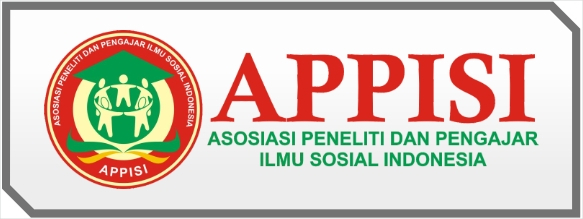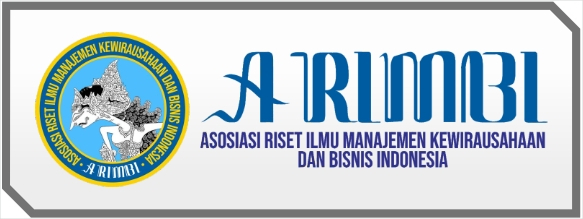Analisis Dampak Persepsi Ancaman Drone Terhadap Pembuatan Kebijakan Pertahanan Dan Proses Alokasi Sumber Daya
DOI:
https://doi.org/10.59031/jmsc.v1i4.228Keywords:
Defense Policymaking, Drone Threat Perceptions, Resource AllocationAbstract
Drones have significantly impacted modern warfare, necessitating a comprehensive understanding of the factors influencing drone threat perceptions and their impact on defense policymaking.
This study examines the influence of drone threat perceptions on defense policymakers' decision-making and resource allocation, focusing on key factors influencing perception formation.
This study uses qualitative research methodology to analyze secondary data from academic research, policy reports, and expert analysis to identify recurring themes and patterns in defense policymakers' perceptions of drone threats.
The research findings highlight that varying drone threat perceptions significantly impact defense policymakers' decision-making processes. Key factors influencing the formation of drone threat perceptions include geographical proximity, technological advancements, and past experiences. These threat perceptions shape defense resource prioritization, with a greater emphasis on acquiring counter-drone technologies and air defense systems.
The implications of defense resource allocation under prevailing drone threat perceptions are significant. Allocating resources effectively to address drone threats necessitates a comprehensive understanding of threat perceptions and their impact on defense priorities.
Overall, this research demonstrates that drone threat perceptions substantially influence defense policymaking and resource allocation. Understanding the key factors shaping these perceptions is crucial for policymakers to better respond to the evolving drone threat.
References
Abiodun, T. F. (2020). Usage of drones or unmanned aerial vehicles (UAVs) for effective aerial surveillance, mapping system and intelligence gathering in combating insecurity in Nigeria. African Journal of Social Sciences and Humanities Research, 3(2), 29–44.
Adnan, W. H., & Khamis, M. F. (2022). Drone use in military and civilian application: Risk to national security. Journal of Media and Information Warfare (JMIW), 15(1), 60–70.
Ajakwe, S. O., Ihekoronye, V. U., Kim, D.-S., & Lee, J. M. (2022). DRONET: Multi-tasking framework for real-time industrial facility aerial surveillance and safety. Drones, 6(2), 46.
Béraud-Sudreau, L., & Giegerich, B. (2023). NATO defence spending and European threat perceptions. In Survival 60.4 (pp. 53–74). Routledge.
Castrillo, V. U., Manco, A., Pascarella, D., & Gigante, G. (2022). A review of counter-UAS technologies for cooperative defensive teams of drones. Drones, 6(3), 65.
Chen, C., Zheng, Z., Xu, T., Guo, S., Feng, S., Yao, W., & Lan, Y. (2023). YOLO-Based UAV Technology: A Review of the Research and Its Applications. In Drones (Vol. 7, Issue 3). MDPI. https://doi.org/10.3390/drones7030190
Chen, J., Chen, P., Wu, Q., Xu, Y., Qi, N., & Fang, T. (2021). A game-theoretic perspective on resource management for large-scale UAV communication networks. China Communications, 18(1), 70–87.
Chen, J., Chen, S., Luo, S., Wang, Q., Cao, B., & Li, X. (2020). An intelligent task offloading algorithm (iTOA) for UAV edge computing network. Digital Communications and Networks, 6(4), 433–443.
Cohen, G. (2014). Public opinion & drones: The formation of american public opinion regarding the use of drones as a US foreign policy tool. Available at SSRN 2476118.
Creswell, J. W. (2014). Research design: qualitative, quantitative, and mixed methods approaches. Sage publications.
Csernatoni, R. (2021). Between rhetoric and practice: Technological efficiency and defence cooperation in the European drone sector. Critical Military Studies, 7(2), 212–236.
Csernatoni, R., & Martins, B. O. (2023). Disruptive Technologies for Security and Defence: Temporality, Performativity and Imagination. Geopolitics, 1–24.
Dong, R., Wang, B., & Cao, K. (2021). Security enhancement of UAV swarm enabled relaying systems with joint beamforming and resource allocation. China Communications, 18(9), 71–87.
Enemark, C. (2021). Armed drones and ethical policing: risk, perception, and the tele-present officer. Criminal Justice Ethics, 40(2), 124–144.
Hale, B., Van Bossuyt, D. L., Papakonstantinou, N., & O’Halloran, B. (2021). A zero-trust methodology for security of complex systems with machine learning components. International Design Engineering Technical Conferences and Computers and Information in Engineering Conference, 85376, V002T02A067.
Han, X., Wang, J., Xue, J., & Zhang, Q. (2019). Intelligent decision-making for 3-dimensional dynamic obstacle avoidance of UAV based on deep reinforcement learning. 2019 11th International Conference on Wireless Communications and Signal Processing (WCSP), 1–6.
Han, Z., & Paul, T. V. (2020). China’s rise and balance of power politics. The Chinese Journal of International Politics, 13(1), 1–26.
Han, Z., Yang, Y., Bilal, M., Wang, W., Krichen, M., Alsadhan, A. A., & Ge, C. (2023). Smart Optimization Solution for Channel Access Attack Defense under UAV-aided Heterogeneous Network. IEEE Internet of Things Journal.
Hardy, J. (2021). Realism, drone warfare, and the future of the international system. In Drones and Global Order (pp. 39–60). Routledge.
Johnson, A. M., Cunningham, C. J., Arnold, E., Rosamond, W. D., & Zègre-Hemsey, J. K. (2021). Impact of using drones in emergency medicine: What does the future hold? Open Access Emergency Medicine, 487–498.
Johnson, J. (2020). Artificial intelligence, drone swarming and escalation risks in future warfare. The RUSI Journal, 165(2), 26–36.
Kallenborn, Z., Ackerman, G., & Bleek, P. C. (2022). A Plague of Locusts? A Preliminary Assessment of the Threat of Multi-Drone Terrorism. Terrorism and Political Violence, 1–30.
Khan, D., Fujiwara, A., Shiftan, Y., Chikaraishi, M., Tenenboim, E., & Nguyen, T. A. H. (2022). Risk perceptions and public acceptance of autonomous vehicles: a comparative study in Japan and Israel. Sustainability, 14(17), 10508.
Klingner, B. (2019). Enhance South Korean Military Capabilities Before OPCON Transfer. Heritage Foundation Backgrounder, 3452.
Lawless, W. (2022). Risk determination versus risk perception: A new model of reality for human–machine autonomy. Informatics, 9(2), 30.
Lee, I. (2020). Internet of Things (IoT) cybersecurity: Literature review and IoT cyber risk management. Future Internet, 12(9), 157.
Lin-Greenberg, E. (2020). Allies and artificial intelligence: Obstacles to operations and decision-making (Spring 2020). Texas National Security Review.
Lin-Greenberg, E. (2021). Wrestling with killer robots: the benefits and challenges of artificial intelligence for national security.
Lushenko, P., & Kreps, S. (2023). Tactical Myths and Perceptions of Reality. Security Studies, 1–8.
Lykou, G., Moustakas, D., & Gritzalis, D. (2020). Defending airports from UAS: A survey on cyber-attacks and counter-drone sensing technologies. Sensors, 20(12), 3537.
Mairaj, A., Baba, A. I., & Javaid, A. Y. (2019). Application specific drone simulators: Recent advances and challenges. Simulation Modelling Practice and Theory, 94, 100–117.
Mall, P., Amin, R., Obaidat, M. S., & Hsiao, K.-F. (2021). CoMSeC++: PUF-based secured light-weight mutual authentication protocol for Drone-enabled WSN. Computer Networks, 199, 108476.
Mehmet, M. (Michael) I., & Simmons, P. (2019). Operationalizing social media in upstream social marketing: A case of shark policy in New South Wales. Journal of Social Marketing, 9(3), 288–308.
Meijer, H., & Brooks, S. G. (2021). Illusions of autonomy: Why Europe cannot provide for its security if the United States pulls back. International Security, 45(4), 7–43.
Munir, A., Aved, A., & Blasch, E. (2022). Situational awareness: techniques, challenges, and prospects. AI, 3(1), 55–77.
Mustofa, A. (2021). The use of drones: From the perspective of regulation and national defense and security. Turkish Journal of Computer and Mathematics Education (TURCOMAT), 12(10), 670–677.
Nerthuz. (2016, August 16). Military Predator Drone. Alamy Stock Photo. https://www.alamy.com/stock-photo-military-predator-drone-127308568.html?imageid=DC02F15A-A19F-448D-B481-66ABEFE38382&p=309335&pn=1&searchId=30d8d7898d948cb62fe5bdba75d5a6d8&searchtype=0
Ossamah, A. (2020). Blockchain as a solution to drone cybersecurity. 2020 IEEE 6th World Forum on Internet of Things (WF-IoT), 1–9.
Raj, A., & Sah, B. (2019). Analyzing critical success factors for implementation of drones in the logistics sector using grey-DEMATEL based approach. Computers & Industrial Engineering, 138, 106118.
Sharma, M. K., Singal, G., Gupta, S. K., Chandraneil, B., Agarwal, S., Garg, D., & Mukhopadhyay, D. (2021). Intervenor: intelligent border surveillance using sensors and drones. 2021 6th International Conference for Convergence in Technology (I2CT), 1–7.
Smith, A., Dickinson, J. E., Marsden, G., Cherrett, T., Oakey, A., & Grote, M. (2022). Public acceptance of the use of drones for logistics: The state of play and moving towards more informed debate. Technology in Society, 68, 101883.
Statista. (2023, August 31). Military drones (UAS/UAV): estimated global production volume 2013-2022 . Statista Research Department.
Stefanovich, D. (2020). Proliferation and threats of reconnaissance-strike systems: a Russian perspective. The Nonproliferation Review, 27(1–3), 97–107.
Tan, L. K. L., Lim, B. C., Park, G., Low, K. H., & Yeo, V. C. S. (2021). Public acceptance of drone applications in a highly urbanized environment. Technology in Society, 64, 101462.
Vamvakas, P., Tsiropoulou, E. E., & Papavassiliou, S. (2019). Exploiting prospect theory and risk-awareness to protect UAV-assisted network operation. EURASIP Journal on Wireless Communications and Networking, 2019, 1–20.
Wright, D. (2014). Drones: Regulatory challenges to an incipient industry. Comput. Law Secur. Rev., 30(3), 226–229.
Yaacoub, J.-P., Noura, H., Salman, O., & Chehab, A. (2020). Security analysis of drones systems: Attacks, limitations, and recommendations. Internet of Things, 11, 100218.
Yahuza, M., Idris, M. Y. I., Ahmedy, I. Bin, Wahab, A. W. A., Nandy, T., Noor, N. M., & Bala, A. (2021). Internet of drones security and privacy issues: Taxonomy and open challenges. IEEE Access, 9, 57243–57270.
Yayboke, E., & Reid, C. (2022). CSIS BRIEFS Counterterrorism from the Sky?















